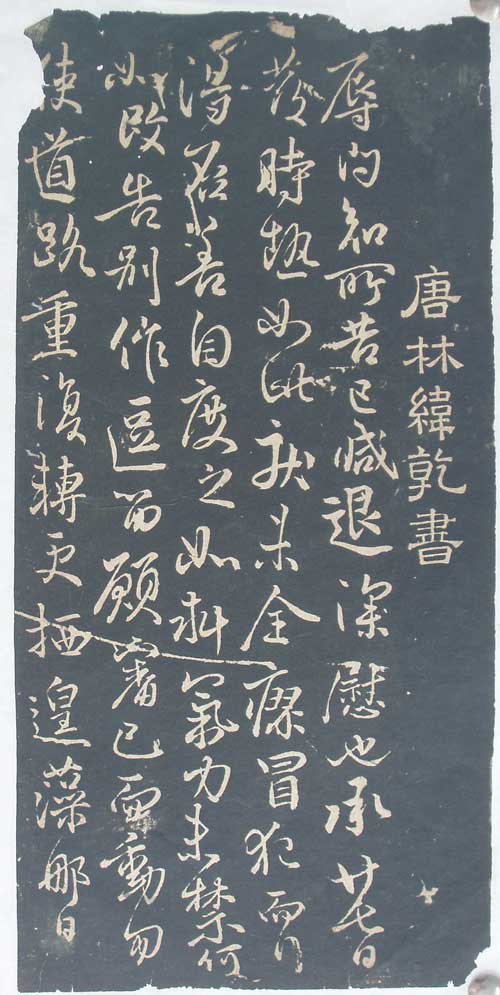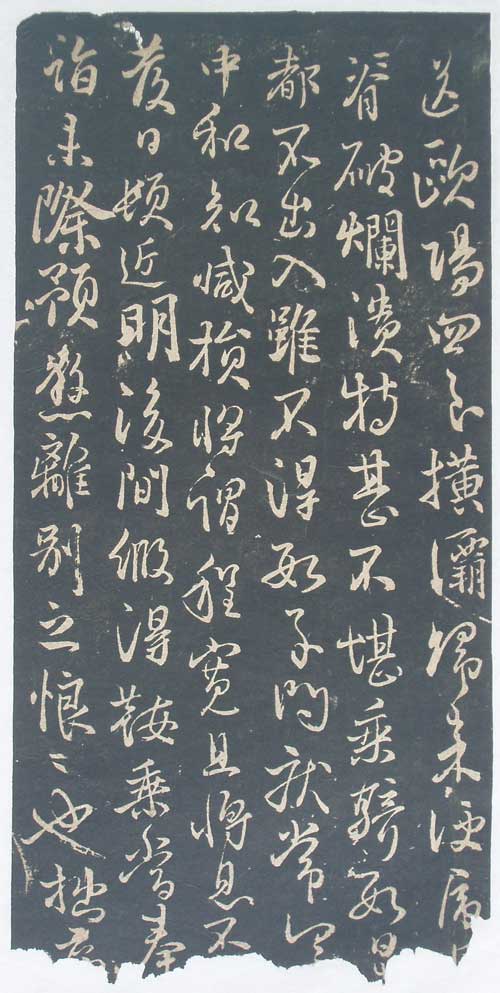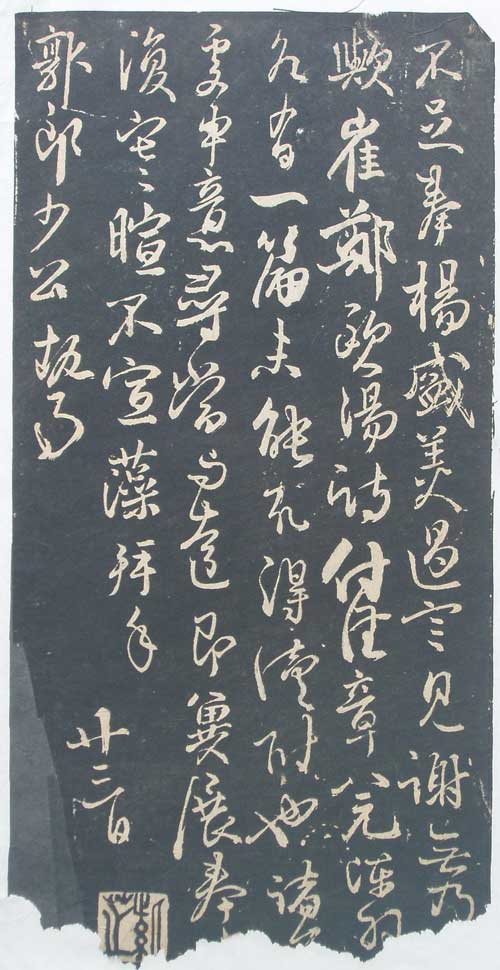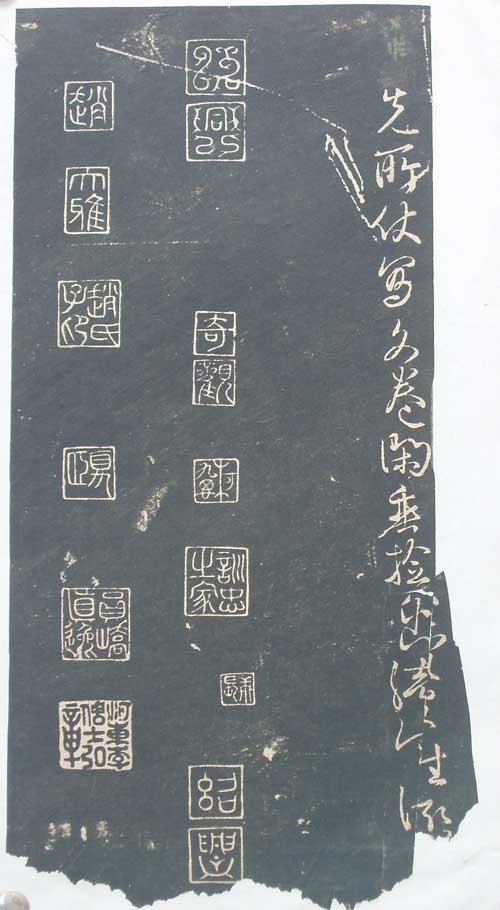The year of birth and death of Lin Zao is unknown. His courtesy name is Weiqian and his nickname is Suinu. He was a native of Putian County, Fujian Province. In the fourth year of Zhenyuan of Tang Dynasty (AD 788), he was awarded the Ming Dynasty Sutra. He became a Jinshi in the seventh year (AD 791) and was the first person to be awarded a Jinshi in Fujian. He had few extraordinary ambitions, worked hard on literature, and studied in Lingyan Jingshe. He was first appointed as the envoy of Rongzhou (now Beiliu, Guangxi), moved to the palace to serve as the censor, served as the deputy envoy of Lingnan Jiedu, and finally became the envoy of Jiangling Prefecture (now Jiangling, Hubei). Lin Zao and his younger brother Lin Yun were both famous for their calligraphy and became famous calligraphers and writers during the Zhenyuan period of Emperor Dezong of the Tang Dynasty. Lin Zao studied calligraphy with Yan Zhenqing, who was especially good at running script. He was very good at Zhiyong legacy method. His writing style is sparse and ancient, and his meaning is deep and ancient. His calligraphy is mixed among the calligraphy arts of Wei and Jin Dynasties, and it is difficult to distinguish the authenticity. There is a "deep comfort note" handed down from generation to generation. In the early Ming Dynasty, Tao Zongyi said in "History of Calligraphy": "Lin Zao's calligraphy is graceful and graceful, and he goes in and out of the domain of Zhiyong." Lin Zao's calligraphy is not as elegant as that of Yu Shinan, Chu Suiliang and others, but is closer to that of Yang Ning His calligraphy art was praised in many previous book reviews. His poems are included in "Complete Poems of the Tang Dynasty".
Appreciation of works:




"Deep Consolation Note" is a cursive banner. The whole work is graceful and stretched, with a coherent charm. His handwriting is mainly in Yan style, blending into the charm of various families, and the ink color is deep and thick. Among the broad-mindedness, there is no lack of majestic spirit. His brushwork is precise, his writing is fine and not astringent, and he can withstand critical or scrutiny. The characteristics of the pen are euphemistic and rounded, the lines are mostly arc-shaped, and are variable. There are square pens and round pens. The strokes are smooth. The strokes of the strokes are rhythmic. The center strokes are light and the side strokes take momentum to enhance the charm of the ink. He brushes the complex characters lightly and conveys the meaning, as fine as silk. When using ink, he can make it thick or light, light or heavy according to the characteristics of the character shape and the expression needs of the composition, striving to create a smooth and natural ink. Rhyme. The layout of his works is quite interesting. It is not a mechanical arrangement, but tilted left and right, sometimes stacked up and down, sometimes separated and cut apart. But if the writing can connect the meaning with each other, the whole composition appears to be very lively, lively, free and elegant, and high-spirited. "Deep Comfort Tie" was included in "Xihongtang Qun Tie" by Dong Qichang.








